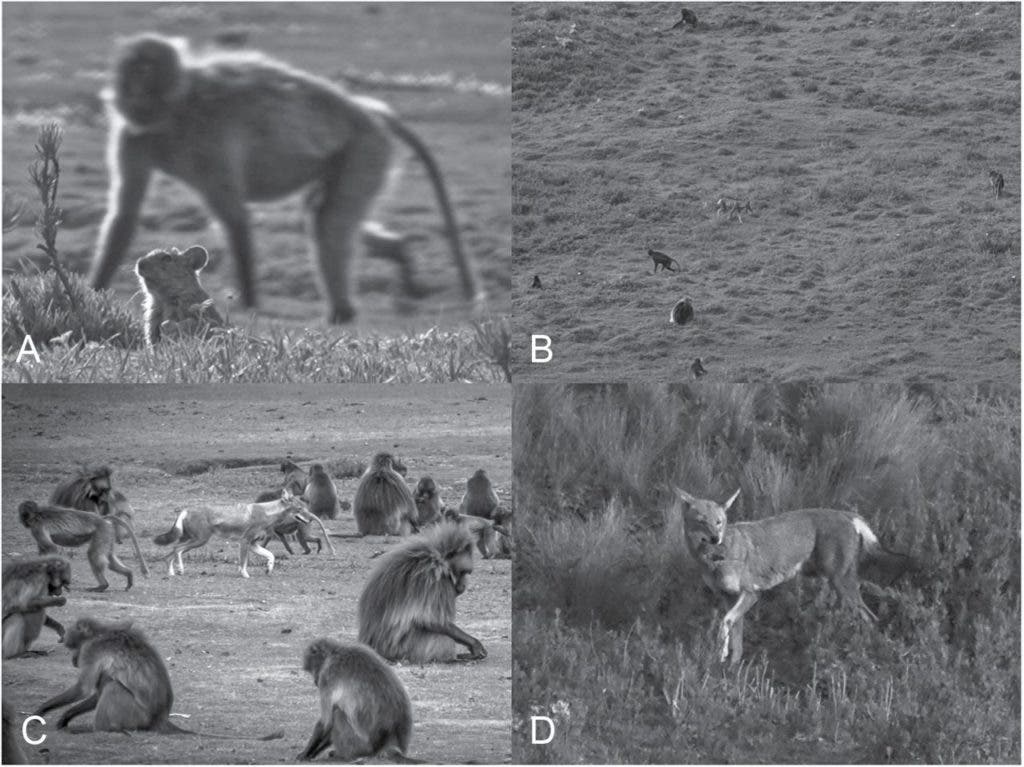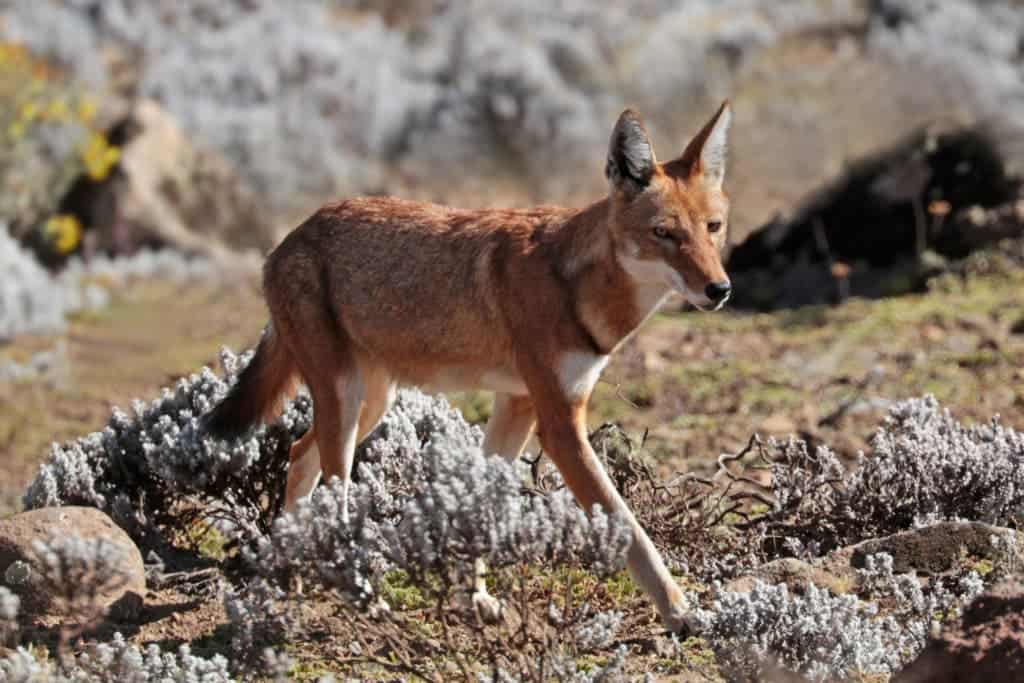
In the grasslands of Ethiopia, scientists were amazed to find a striking example of inter-species collaboration. Ethiopian wolves were seen casually strolling among herds of gelada monkeys, which you would expect to flee out of the way of such a predator. But it seems like the monkeys tolerate the wolves in their presence and are not frightened by them. The wolves, on the other hand, ignore the geladas’ potential as meals, preferring to linger around the herd because it helps them catch more rodents. This odd relationship resembles the ancient domestication of dogs or cats by humans, some researchers say.
Live and let live
Gelada monkeys (Theropithecus gelada) look a lot like baboons. These primates are known to live in close-knit family groups, but can also live as part of shockingly vast communities consisting of hundreds of individuals. They live peacefully even in the most numerous communities, a relatively rare achievement in the wilds of Africa.
Geladas are graminivores, meaning their diet consists of 90% grass. Essentially, they’re the only living primates that subsist almost entirely on grass, a trait more commonly seen in ungulates like deer and cattle.
While the primates congregate in huge herds, munching on grass for hours upon hours, the shrewd (and endangered) Ethiopian wolf (Canis Simensis) mingles with the geladas. Usually, the wolves travel in zig-zag, sprinting when they sense prey is within their grasp. But, around the geladas, the wolves roam casually, being careful not to startle the herd.
Researchers at Dartmouth College observed the dynamics between the species for a new study. They conclude that the Ethiopian wolf is not interested in geladas for food, although they have no qualms hunting juvenile sheep and goat. The monkeys seem to know this, as they don’t seem to feel threatened in the predators’ presence. But why is that?
After following Ethiopian wolves for 17 days, the researchers found that those individuals which hunted rodents within a gelada herd were successful 67% of the time, compared to a success rate of only 25% when they prowled on their own. The findings were reported in the Journal of Mammalogy.
“For Ethiopian wolves, establishing proximity to geladas as foraging commensals could be an adaptive strategy to elevate foraging success. The novel dynamics documented here shed light on the ecological circumstances that contribute to the stability of mixed groups of predators and potential prey,” wrote the authors of the new study.
For now, it’s not clear what makes the wolves more successful when hunting within gelada groups. The monkeys might be flushing out rodents from their burrows due to their insistent grazing, but that’s just an unverified hypothesis at the moment. Alternatively, the monkeys might be providing cover for the wolves, distracting the rodents from the dangerous predator.

Sometimes, a wolf will attack a gelada young. During one instance when this happened, the other monkeys in the herd quickly attacked the wolf, forcing it to drop the infant. After the wolf was driven away, it was never allowed in the midst of the herd again. Other individuals seem to understand this dynamic very well and will resist the temptation of grabbing a quick gelada meal in favor of the prospect of better dividends in the long run.
The researchers say that the Ethiopian wolf might be hanging around other species, such as cattle, to hunt more rodents. It’s also possible other predator species may be doing something similar without us finding out about it yet.
What’s intriguing is that the gradual toleration between the two species is very similar to the domestication process performed by humans on dogs. The first wolves began to be domesticated by humans sometime between 40,000 and 11,000 years ago, but the details pertaining to how this happened are not clear. According to one hypothesis, wolves started hanging around humans, who would leave large carcasses behind them after each big hunt. Gradually, the two species became more accustomed to one another. Later, wolves may have helped humans on the hunt, cementing the relationship between the two.
Could the same thing be happening in Ethiopia’s grasslands? Given a couple thousand of years, could we see geladas with wolves as pets? That would be quite the sight — but it’s rather unlikely. The monkeys don’t seem to derive any benefit from tolerating the wolves in their presence, and without a two-way value exchange between the two species, domestication won’t likely happen.
What’s more, the Ethiopian wolf might become extinct soon before there’s any reasonable time for domestication to play out. Researchers estimate that there are only 450 adult Ethiopian wolves left in the wild. Continuous loss of habitat due to high-altitude subsistence agriculture represents the major current threat to the Ethiopian wolf.






